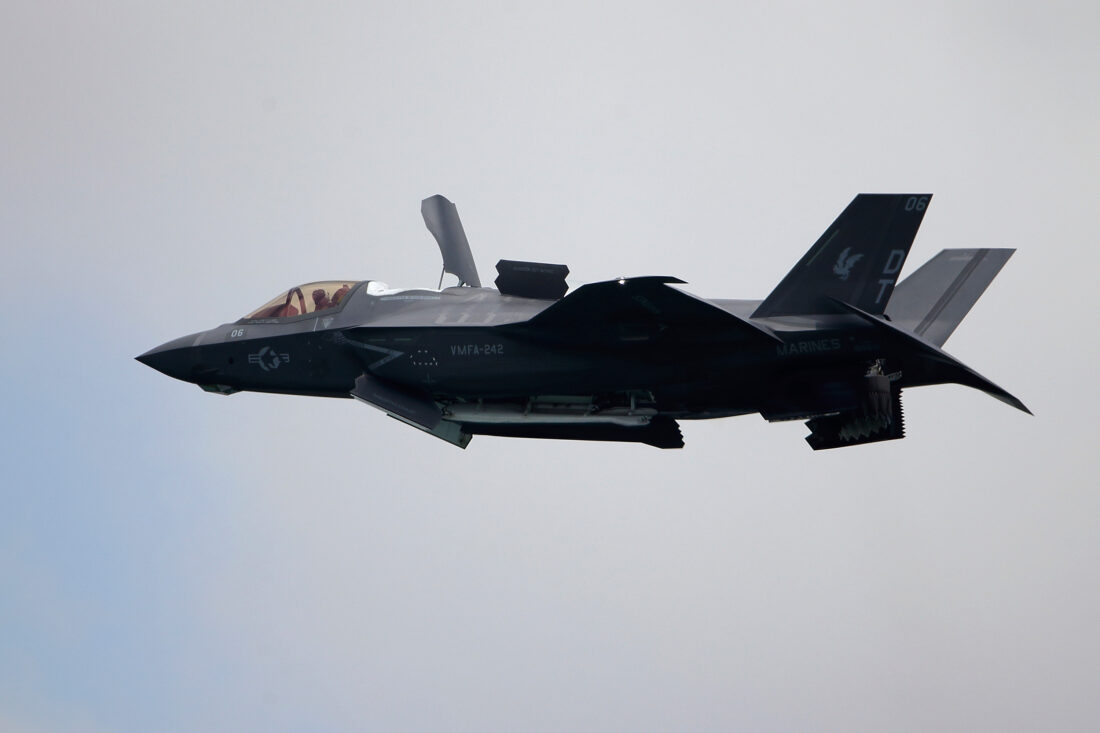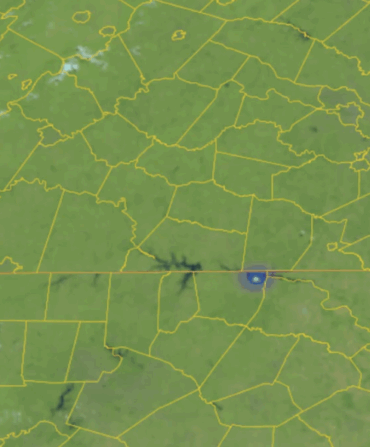First things first, let’s let a fighter pilot put this in perspective: “I was very grateful to hear that the pilot was located and is in good shape at the hospital. That’s the first concern when you hear about something like this,” said Ted Fienning, a former F/A-18 fighter pilot at Marine Corps Air Station Beaufort in South Carolina.
Here’s what happened: Sunday afternoon, a fighter pilot in South Carolina ejected from a F-35B Lightning II jet. The pilot parachuted to safety near Joint Base Charleston and is in stable condition. The jet? For more than twenty-four hours, its fate was a mystery. (Just in: A debris field was located about eighty miles northeast of Charleston.)
While the Joint Base Charleston put out a statement asking for civilian cooperation in the search, Charleston-area social media lit up. “We’re on the airport flight path,” posted the moderator of my neighborhood Facebook group, with a link to the few details we knew yesterday.
More came from the base: “Based on the jet’s last-known position and in coordination with the FAA, we are focusing our attention north of JB Charleston, around Lake Moultrie and Lake Marion.”
When I heard the news yesterday, I turned to my husband. “Didn’t I ask you if that sounded like a low plane when we were by the river?” We had just driven home through a thunderstorm from a friend’s house on the Edisto River, not too far from the jet’s last known location. I had heard a loud sound and, out of habit, pulled up my trusty flight radar app. No planes turned up on my screen. “Must have been military!” I remember saying. (Military flights don’t ping on my free app, for obvious reasons.)
Today, I called the number listed on the base’s public announcement. “I heard something near Cottageville, I think it was headed north,” I said.
“Yep, that’s where we’re looking. Got crews out there, thanks.” Click.
At a staff meeting, G&G editors wondered if the pilot could have programmed the plane to turn around and crash into the Atlantic. Not likely, as Fienning explained to me. “When a pilot ejects, the jet’s going down. There’s no way an F-35 is gliding out all the way to the sea,” he said. “Even though I was a Marine Corps fighter pilot, I don’t know all the systems and capabilities of an F-35. But in an emergency situation, all pilots are thinking about what is below them to maximize the safety of the people on the ground.”
On social media, many comments involved the price of a fighter jet, with recent reports pegging the one lost at around $80 million. “There’s no acceptable level of loss,” Fienning said. “We want that number to be zero. However, we accept that it’s a difficult and dangerous job and things go wrong. This pilot has been through hundreds of hours of rigorous training, day and night. We’re not thinking about how much an aircraft costs. We’re thinking about how much it would cost to not be well trained for our people on the ground.”
The bright spot, he said, is that training ultimately went as planned. “The survival systems worked. That gives you a great sense of relief as a fighter pilot—to see another pilot make it back home in one piece.”
I appreciated his clarifying words about what had been setting local and now national media ablaze all day. Then I asked where he thought the thing landed.
“They’re saying it crashed in my home county, Sumter County,” he said. “So I called my dad immediately and asked if he’d heard anything. Of course he didn’t—he was at church.”
I texted a friend, William Melvin Brown Jr., a retired Navy veteran and doctor in Charleston, to get his take: “Strange to lose a fighter and have no idea. Aircraft transmit IFF (Identification Friend or Foe) codes constantly. You should know the point of last known transmission. It’s similar to find my iPhone except for an aircraft.”
Finally, I had to ask a couple of our great modern storytellers to hypothesize what could have happened to the jet lost for a full day to the Southern wilds?
“I’m Gen X, so I’m gonna assume someone is putting a photo of the jet on a milk carton or checking to see if it got Baby Jessica’d down a well,” replied the Georgia-based thriller writer Karin Slaughter.
The living legend of dark Southern tales himself, James Lee Burke, had a philosophical response: “When I was an employee of the Job Corps in the 1960s in East Kentucky, people were still making moonshine,” he told me. “Maybe they’re still making booze and that F-35 is parked in a rockhouse. Why not? They’re unusual people. My friend had run off a million gallons. But he was also a religious man. I asked him if this caused him any moral conflict. He looked at me as if I had just arrived from Mars. He said, ‘We been breaking man-made laws, son. We ain’t broke no God-made laws.’ Anything is possible in the South.”
The thriller writer Stacy Willingham, who lives just outside Charleston, pointed out one very important facet of Lowcountry life to keep in mind: “While it may seem like the plane disappeared with a poof, it was, in my mind, a very distinct pluff. That’s right: The F-35 is wedged somewhere deep in our very own pluff mud. For the uninitiated, this oozy sludge resembles whipped mousse with its dark brown color and gentle peaks. From the surface, it seems deceptively light—tempting, even—like diving into a pool of chocolate pudding, but for those of us who have made that mistake, we understand that looks are deceiving. The name itself is an onomatopoeia for the sound your feet make when you plop right in: the wet squish between your toes, the suction-cup slop as you attempt to pull them back out. And look, we get it. We’ve all lost stuff in there: shoes, sunglasses, iPhones forgotten in bathing suit trunks. It’s a treasure chest of fallen items never to be seen again. So… can it swallow an entire fighter jet? Sure, it can. That’s why we call it the quicksand of the South.”
Now that more details are starting to trickle in, we’ll hopefully know the full story soon. In the meantime, Southerners are still looking for this “broken arrow” off Tybee Island in Georgia. It’s been lost for decades.








